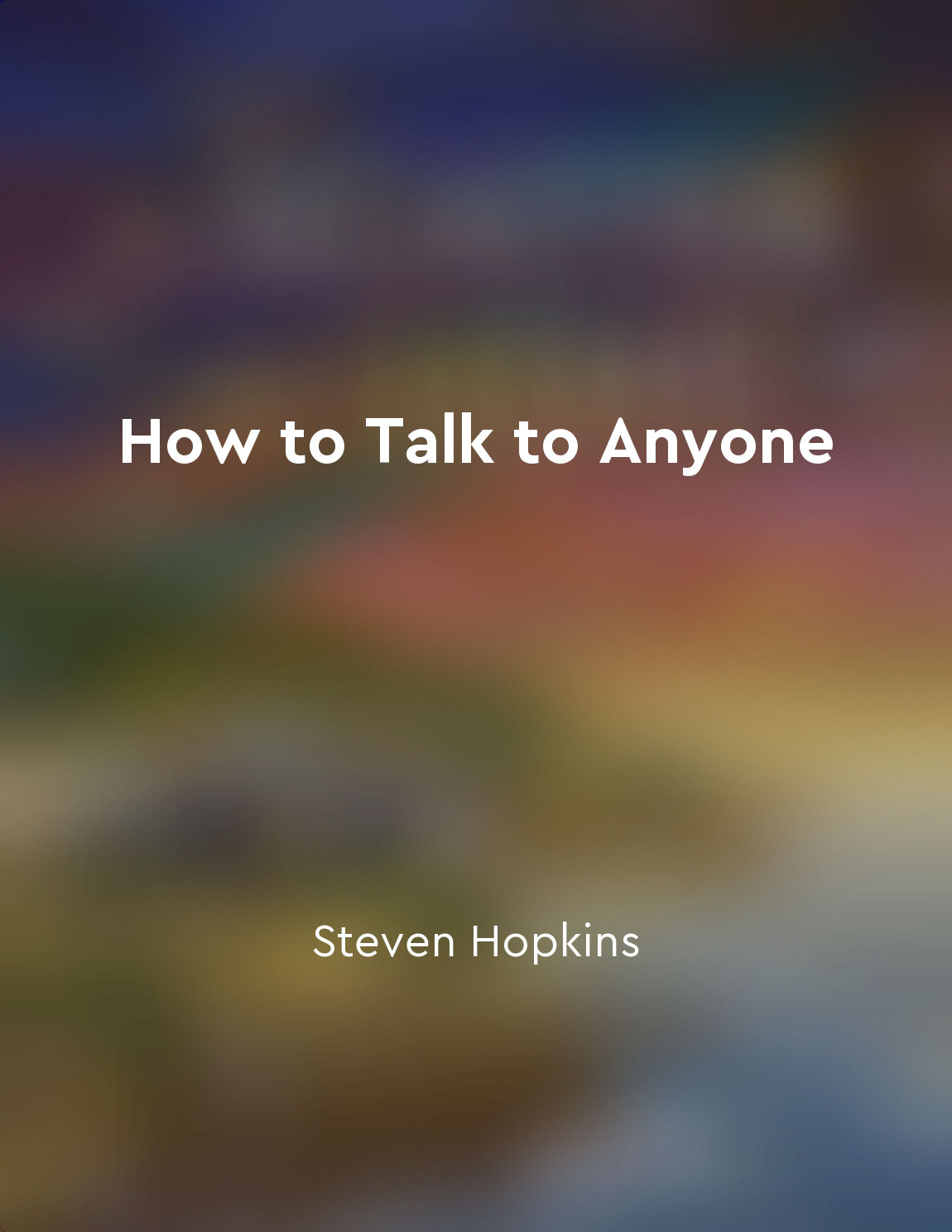Pay attention to nonverbal cues in small talk from "summary" of The Fine Art Of Small Talk by Debra Fine
When engaging in small talk, it's important to remember that communication is not just about the words being spoken. In fact, much of our communication is done through nonverbal cues. These cues can include body language, facial expressions, tone of voice, and even eye contact. Paying attention to these nonverbal cues can provide valuable insight into the thoughts and feelings of the person you are talking to. For example, if someone is avoiding eye contact or crossing their arms, they may be feeling defensive or uncomfortable. On the other hand, if they are leaning in, making eye contact, and nodding along with the conversation, they are likely engaged and interested in what you have to say. By being aware of these nonverbal cues, you can adjust your own behavior accordingly to ensure a more positive and productive conversation. In addition to observing the nonverbal cues of others, it's also important to be mindful of your own body language and tone of voice during small talk. By maintaining an open posture, making eye contact, and smiling, you can convey warmth and friendliness, which can help to put the other person at ease. Similarly, using a calm and friendly tone of voice can help to create a welcoming atmosphere and encourage the other person to open up.- Paying attention to nonverbal cues in small talk is essential for effective communication. By being attuned to both your own body language and the nonverbal cues of others, you can enhance your ability to connect with people and build stronger relationships. So next time you find yourself engaged in small talk, remember to look beyond the words being spoken and take note of the nonverbal signals that are being sent.
Similar Posts
Effective public speaking can boost career prospects
Public speaking is a critical skill in today's business world. Those who can effectively communicate their ideas, persuade othe...
Facial expressions are universal forms of nonverbal communication
Facial expressions are universal forms of nonverbal communication. They are a key component of human interaction, playing a cru...
Build trust through authenticity
To build trust through authenticity means being genuine and sincere in your interactions with others. When you are authentic, y...
Keep your message concise and to the point
In communication, brevity is a virtue that cannot be overstated. Keeping your message concise and to the point is essential to ...
People may intentionally mislead through body language
Body language can be a powerful tool for communication, allowing us to convey our thoughts and feelings nonverbally. However, i...
Share your ideas and thoughts openly with others
Openly sharing your ideas and thoughts with others is a powerful way to enrich your communication skills. When you express your...
Passive communication can lead to feelings of powerlessness
Passive communication can make us feel powerless in our interactions with others. When we engage in passive communication, we t...
Use storytelling to make your message memorable
Imagine a world where information flows freely and effortlessly. A world where every message you receive sticks with you, reson...
Power dynamics impact conversational dynamics
Power dynamics play a crucial role in shaping conversational dynamics. The distribution of power between individuals can signif...

Listen actively and attentively
Learn the importance of engaging in active and attentive listening from this insightful guide. Discover how to truly connect wi...

